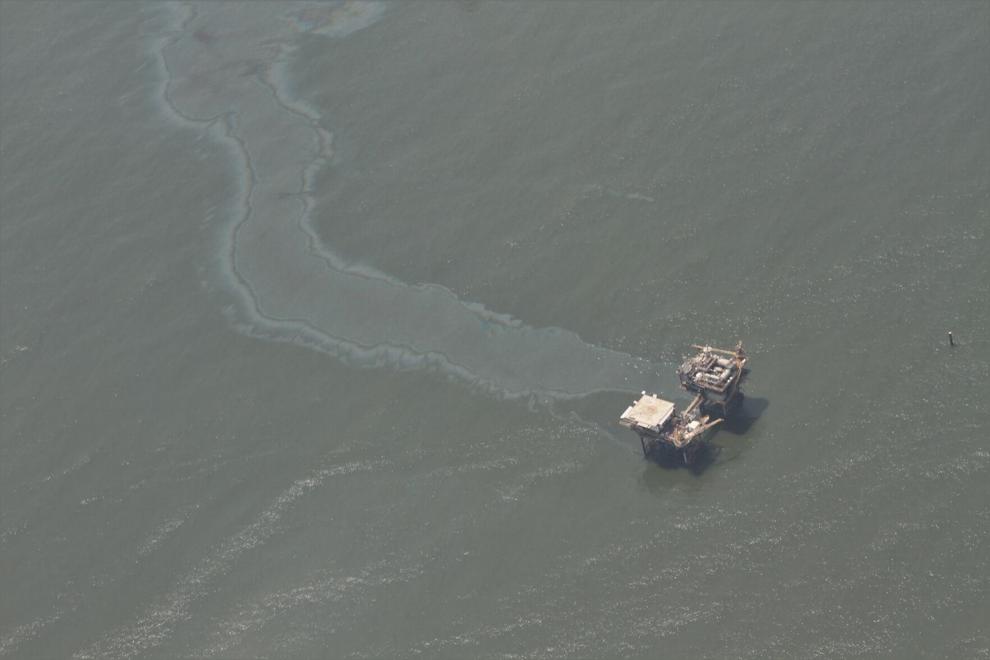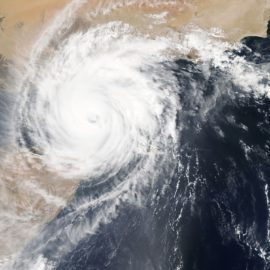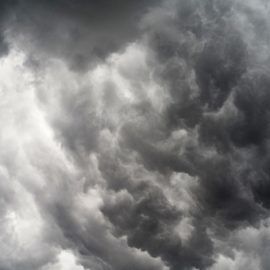
350 oil spills and the Coast Guard is opening a pollution response team in Baton Rouge.
The tally of oil and chemical spills in the wake of Hurricane Ida continues to grow, reaching 350 on Monday morning, according to the U.S. Coast Guard. The reported spills in Louisiana are mostly in the Gulf of Mexico and Mississippi River and have been linked to broken oil wells, damaged oil wells and flooded refineries. One of the largest incidents was an 11-mile-long oily sheen in Bay Marchand near Port Fourchon that was spotted by the Coast Guard and other federal agencies just after the storm, which struck south Louisiana as a Category 4 hurricane on Aug. 29. On Sunday, Coast Guard crews saw no more oil at the spill site. The sheen originated from a damaged and inactive pipeline owned by Talos Energy Offshore. The company sent a crew to clean up the oil but recovered little of it, according to the Louisiana Oil Spill Coordinator’s Office. The spill likely stopped after the pipeline, which sits on the sea floor, released whatever oil was in it before it was sealed up and abandoned years ago. Spill responders are still trying to assess how much oil escaped.
nola.com

Healthy Gulf
The oil spills come from both active and inactive sources as so many inactive ones have not been capped or cleaned up.
The sheen originated from a damaged and inactive pipeline owned by Talos Energy Offshore. The company sent a crew to clean up the oil but recovered little of it, according to the Louisiana Oil Spill Coordinator’s Office. The spill likely stopped after the pipeline, which sits on the sea floor, released whatever oil was in it before it was sealed up and abandoned years ago. Also on Monday, the Coast Guard reported finding another discharge from a wellhead about five miles from the Bay Marchand spill site. The wellhead, owned by S2 Energy, was reportedly fixed and is no longer leaking, according to the Coast Guard. The spill produced a sheen about 100 yards long and 100 yards wide. Oil spill responders are still assessing large sheens surrounding Phillips 66’s Alliance Refinery south of Belle Chasse. The refinery flooded after surging water from Ida broke through a makeshift levee nearby. Aerial photos taken on Saturday showed sheens on floodwaters covering much of the 2,400-acre refinery complex.
State agencies have also reported oil damaged birds.
On Sunday, the state Department of Wildlife and Fisheries found at least 50 oil-coated birds, including ducks, teal and a variety of egret species. The number of birds and other wildlife harmed by the polluted floodwater is expected to rise, wildlife officials said Monday.
The oil is also on the flood waters. Environmental groups are wondering what this is standard for floods and high waters.
Oil spill response personnel have been using booms and vacuum trucks to capture and remove the oil from the floodwaters. Environmental groups expressed frustration that counting large numbers of oil spills has become routine after large storms. “It’s not surprising anymore to have (350) oil spills after a hurricane,” said Scott Eustis, community science director for Healthy Gulf. “Companies aren’t going to fix this. Government needs to. Otherwise, this is going to happen every time.” Dozens of other environmental threats have been reported in the days after Ida ripped through the state. These include various air pollutants released at chemical plants and flaring at the Shell Norco petrochemical complex in St. Charles Parish, the Chalmette and Valero refineries and other facilities.

Healthy Gulf
Before the hurricane hit, there was a report of over 500 toxic areas in the path.
Last month, a Times-Picayune | New Orleans Advocate analysis of industrial data and Ida’s predicted route through the state found 590 sites that produce or store oil and other toxic chemicals were in harm’s way. Almost 380 of them were within 50 miles of the coast, putting them at particular risk from storm surge, strong winds and heavy rain, according to the analysis of sites listed in the U.S. Environmental Protection Agency’s Toxics Release Inventory. Other recent storms have triggered large chemical releases at plants along the Gulf Coast. Last year, Hurricane Laura caused a chemical fire at the BioLab chlorine plant near Lake Charles. The widespread release of toxic chlorine gas and other harmful emissions prompted a shelter-in-place alert for the area. No injuries were reported, due in part to large-scale evacuations before the hurricane. Hurricane Katrina caused at least 540 oil spills into Louisiana waters in 2005. The combined 10.8 million gallons of oil spilled equals the amount released during the 1989 Exxon Valdez disaster in Alaska.
Once again oil, who does not clean up after themselves, is front and center in this situation. They need to be held accountable.



